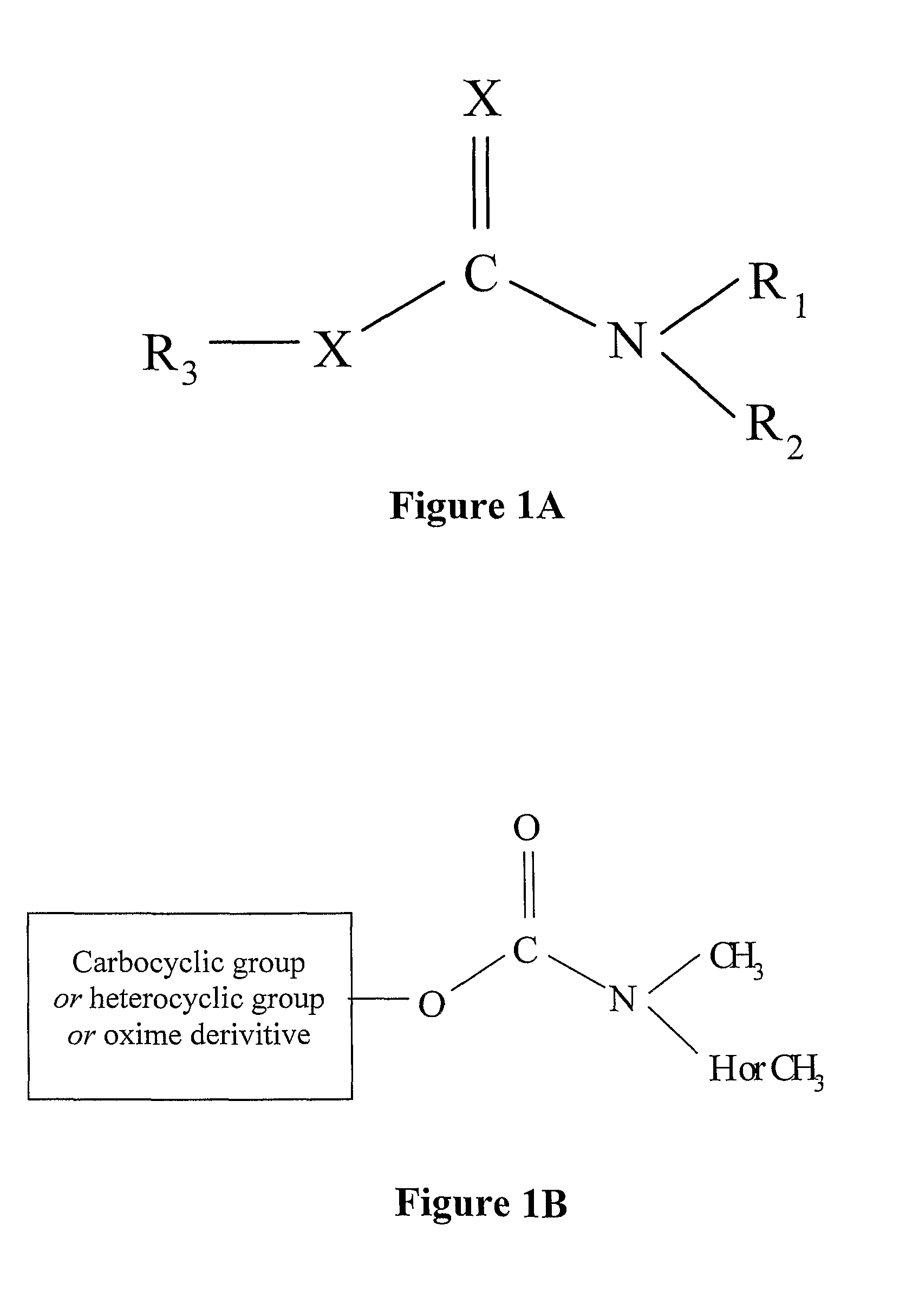Methods for degrading toxic compounds
a toxic compound and toxic compound technology, applied in the field of toxic compound degradation, can solve the problems of increasing public concern about the deleterious effects of pesticide contamination, inability to reach the vast majority of active ingredients, and inability to clean up the residues of pesticides using traditional methods such as burial or chemical degradation, which are often too expensive or otherwise impractical for cleaning up pesticide residues. , to achieve the effect of strengthening the stability of a polypeptid
- Summary
- Abstract
- Description
- Claims
- Application Information
AI Technical Summary
Benefits of technology
Problems solved by technology
Method used
Image
Examples
example 1
Materials and Methods
LC-MS assay
[0242]Before benzimidazole carbamate-degrading enzymes could be either evolved in vitro or identified and isolated from microorganisms, it was necessary to develop an appropriate hydrolysis assay for a representative pesticide, such as carbendazim (MBC). The inventors had difficulties in standardizing a spectrophotometric assay for carbendazim degradation since carbendazim and its metabolite, 2-aminobenzimidazole, had the same absorption spectrum. Therefore, an LC-MS assay for carbendazim degradation was developed.
[0243]An Agilent series LC system controlled by Agilent TOF Software (Version A.01.00) was used (Agilent Technologies). The mobile phase consisted of acetonitrile:water (18:82 v / v, and both containing 0.1% v / v formic acid). It was pumped at a flow rate of 0.7 mL min−1. The column employed was a Aqua® C18, 5 μm-particle size, 250×4.60 mm (Phenomenex) and was operated at 25° C. The photodiode array detector was operating at a wavelength of 270...
example 2
Soil Enrichments
[0253]Soil samples were collected from a local golf course that routinely used carbendazim as a fungicide. Enrichment cultures were then set up using carbendazim as the sole source of carbon or nitrogen, under both aerobic and anaerobic conditions. Several aerobic soil enrichments yielded mixed cultures with carbendazim degrading activity. A pure carbendazim degrading bacterium, Nocardioides sp. SG-4G, was then isolated several times from different enrichments and later identified on the basis of the sequence of its 16S rRNA gene. The sequence of the 16S rRNA gene which was characterized is provided as SEQ ID NO:4.
[0254]This strain utilized carbendazim as a sole source of carbon and nitrogen. Resting cell studies demonstrated the complete disappearance and mineralisation of 8 ppm carbendazim in as little as three minutes. This represents extremely rapid turnover of the pesticide and was a very promising indication that the enzyme responsible would be an effective bio...
example 3
Biochemical Characterization of the Carbendazim Catabolic Pathway
[0256]Results of resting cell studies and enzyme assays confirmed that carbendazim is hydrolysed by a secreted enzyme to 2-aminobenzimidazole (2-AB), which is further degraded to 2-hydroxybenzimidazole (2-HB). These metabolites were identified on the basis of their retention times in HPLC and m / z in LC-MS, which matched exactly those of authentic standards. The pathway for initial degradation of carbendazim by the strain is shown in FIG. 2.
PUM
| Property | Measurement | Unit |
|---|---|---|
| molecular weight | aaaaa | aaaaa |
| Tm | aaaaa | aaaaa |
| temperature | aaaaa | aaaaa |
Abstract
Description
Claims
Application Information
 Login to View More
Login to View More - R&D
- Intellectual Property
- Life Sciences
- Materials
- Tech Scout
- Unparalleled Data Quality
- Higher Quality Content
- 60% Fewer Hallucinations
Browse by: Latest US Patents, China's latest patents, Technical Efficacy Thesaurus, Application Domain, Technology Topic, Popular Technical Reports.
© 2025 PatSnap. All rights reserved.Legal|Privacy policy|Modern Slavery Act Transparency Statement|Sitemap|About US| Contact US: help@patsnap.com



